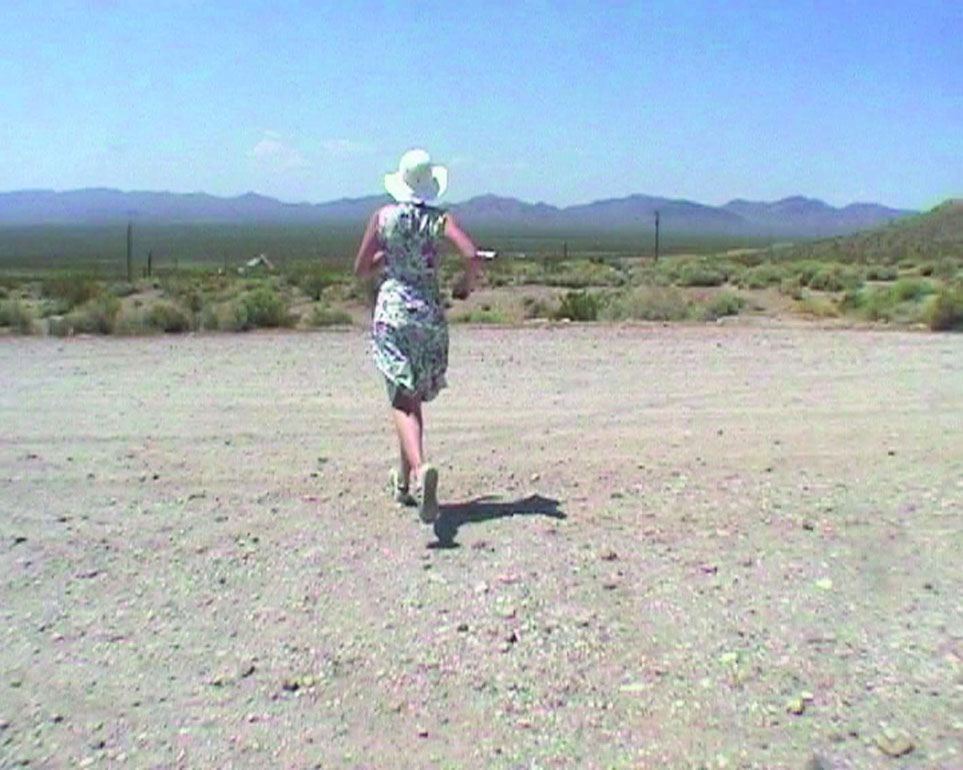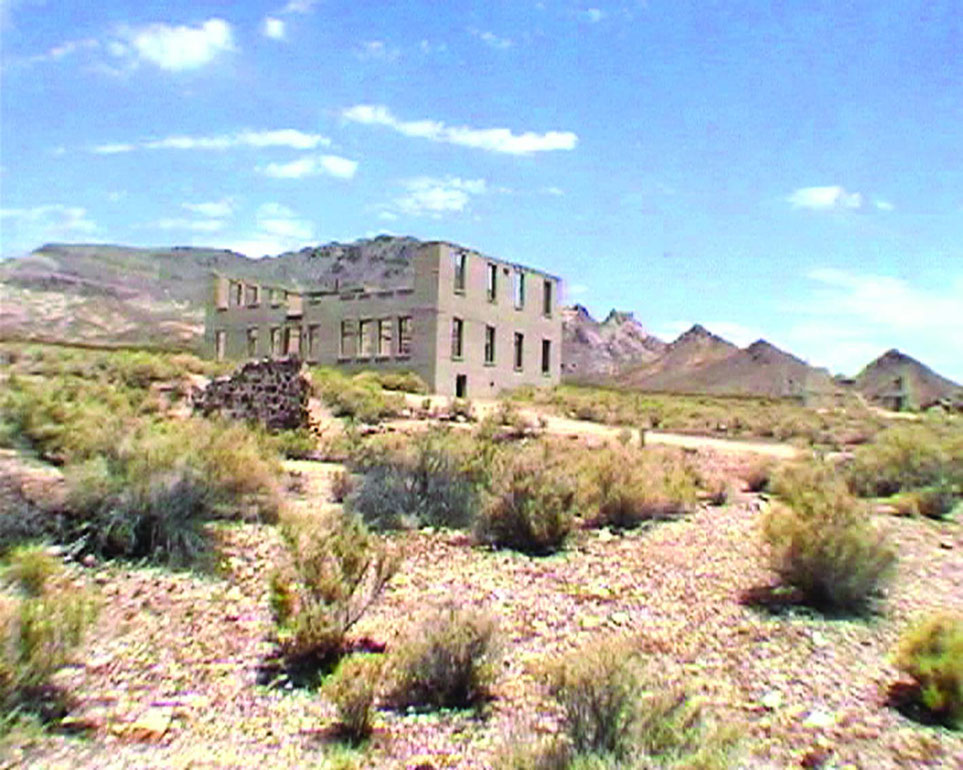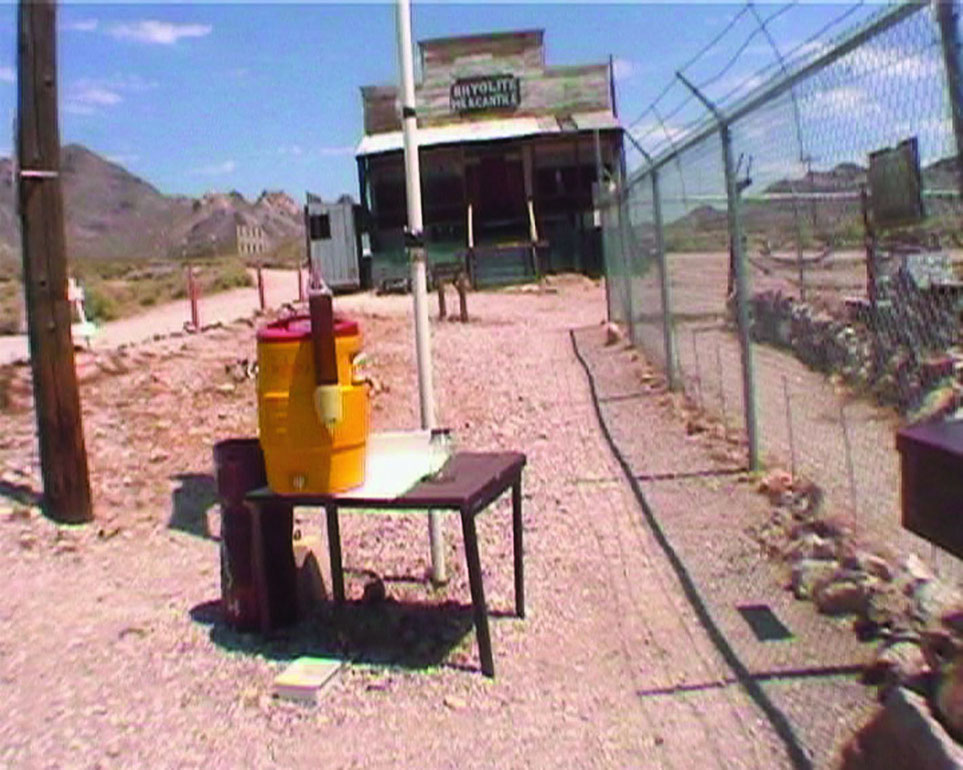Paranoia (Death Valley)
Empty space, especially in the camera´s apparative coordinates, is never really empty. It can become visibly and conceivably empty only when the spatial conditions convey a fundamental absence over time, one which infects the entire space. And something else – the camera – is present to have seen everything in even the "emptiest" of spaces. You´re never alone.
Miriam Bajtala´s Paranoia (Death Valley) stages a peculiar chase involving the camera and its subject at an abandoned hamlet in California´s Death Valley: A woman´s figure runs away from the camera, then disappears suddenly, after which the camera´s subject – a thoroughly lovable "something" waddling along in fast motion – follows the woman through the picturesque ghost town. The figure reappears, runs away again, the camera follows her, and so on. In this way the space is turned into a narrative location, a dubious setting filled with phantoms from the past: The woman must have been here at some point. The entire process repeats, opening up into a looped eternity, but Bajtala ends her filmic adventure game before the pursuer can catch its prey. A tragic aspect: The figure´s place there and the camera´s here – our place – can never meet.
Therefore our relationship with the setting is paranoid and divided: The primary identification through the camera and the secondary identification with the woman in the space make us realize in an eerie way that we have never really been with ourselves, but always off to the side. And that´s the original meaning of the word para-noia: beside-mind. (Michael Palm)
Paranoia (Death Valley) (Texte français)
L'espace vide, ne serait-ce que du fait des données apparatives de la caméra, n'est jamais vraiment vide. Pour être concevable et visible en tant que vide, il faut qu'au fil du temps, les paramètres spatiaux nous fassent ressentir un manque fondamental qui contamine l'espace entier. En outre, même dans l'espace « le plus vide », il y a forcément déjà eu une présence autre la caméra qui a vu. On n'est jamais seul.
Paranoïa (Death Valley) de Miriam Bajtala met en scène une étrange course-poursuite entre caméra et objet, dans un hameau désert en pleine Vallée de la Mort californienne : un personnage féminin fuit devant la caméra avant de disparaître brusquement, la caméra-sujet une drôle de chose, plutôt attachante, qui se dandine en accéléré se lance alors à sa poursuite à travers cette ville fantôme pittoresque jusqu'à l'endroit où la femme s'est volatilisée. Celle-ci réapparaît, prend la fuite, la caméra la poursuit, et ainsi de suite. L'espace devient ainsi lieu narratif, théâtre équivoque habité par les fantômes du temps : la femme sera passée par là. Cet enchaînement se répète une fois encore dans son intégralité, s'ouvrant sur l'infini en boucle, mais Bajtala interrompt son adventure game cinématographique avant que la poursuivante ne parvienne à attraper la pousuivie. Constatation tragique, l'emplacement du personnage là-bas et l'emplacement de la caméra ici notre emplacement ne coïncident jamais.
D'où le caractère paranoïde et ambigu de notre rapport à la situation : l'identification primaire avec la caméra et l'identification secondaire à la femme dans l'espace nous font réaliser de façon inquiétante que nous n'avons jamais été en nous, mais toujours à côté de nous-mêmes. C'est bien ce que signifie para-noïa : penser-à côté. (Michael Palm)
Traduction: Françoise Guiguet
Paranoia (Death Valley)
2005
Austria
5 min 30 sec



